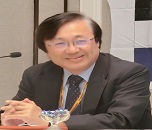
Fumihiko Hinoshita
National Center for Global Health and Medicine, Japan
Title: Why don’t you use a very effective herbal medicine, Shao-yao-gan-cao-tang (Japanese name: Shakuyaku-kanzo-to), for muscle cramp in patients on hemodialysis?
Biography
Biography: Fumihiko Hinoshita
Abstract
Most of the physicians in Western countries don’t know that the current traditional herval medicines, which are often used in East Asia, are very useful and effective for specific medical problems or symptoms. One of these is Shao-yao-gan-cao-tang (Japanese name: Shakuyaku-kanzo-to), an anti-cramping medicine, which exhibits an outstanding effect against muscle cramp in the patients on hemodialysis (HD), one of the most common complications of HD. Shakuyaku-kanzo-to consists of equal amounts of paeony and licorice roots and has a prophylactic anti-cramping effect. It has frequently been used for more than 20 years in Japan since the author and a few other groups started to make use of it. In our first report (Am J Chin Med 31:445-453, 2003), Shakuyaku-kanzo-to (EK-68®, Kracie Pharma, Ltd., Tokyo, Japan) at 6 g per day was prospectively administered for 4 weeks to five patients on HD who were suffering from frequent muscle cramps. Consequently, skeletal muscle cramps completely disappeared in two of the patients after the start of oral administration of Shakuyakukanzo-to. Moreover, the frequency of cramping was significantly decreased in two of the remaining three patients after persistent administration without any serious side effects. The severity of muscle cramps was also decreased by this treatment in the responsive patients. The inhibitory effect of Shakuyaku-kanzo-to on muscle contraction was also experimentally confirmed by using phrenic nerve-diaphragm preparations from male Wistar rats. Conclusively I suggest that Shakuyaku-kanzo-to of remarkable efficacy should be used to relieve pain with muscle cramp in hemodialyzed patients as soon as possible.
